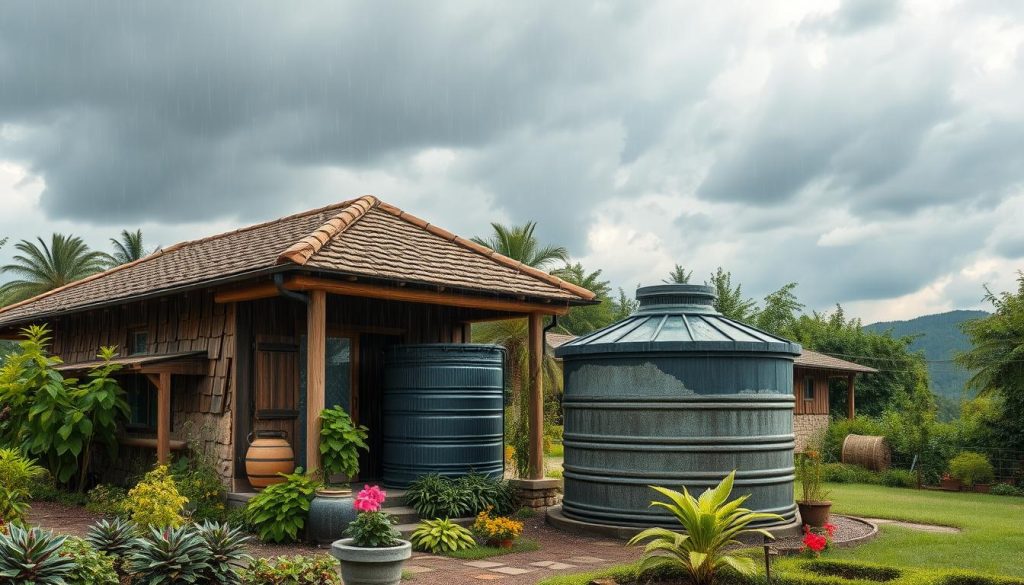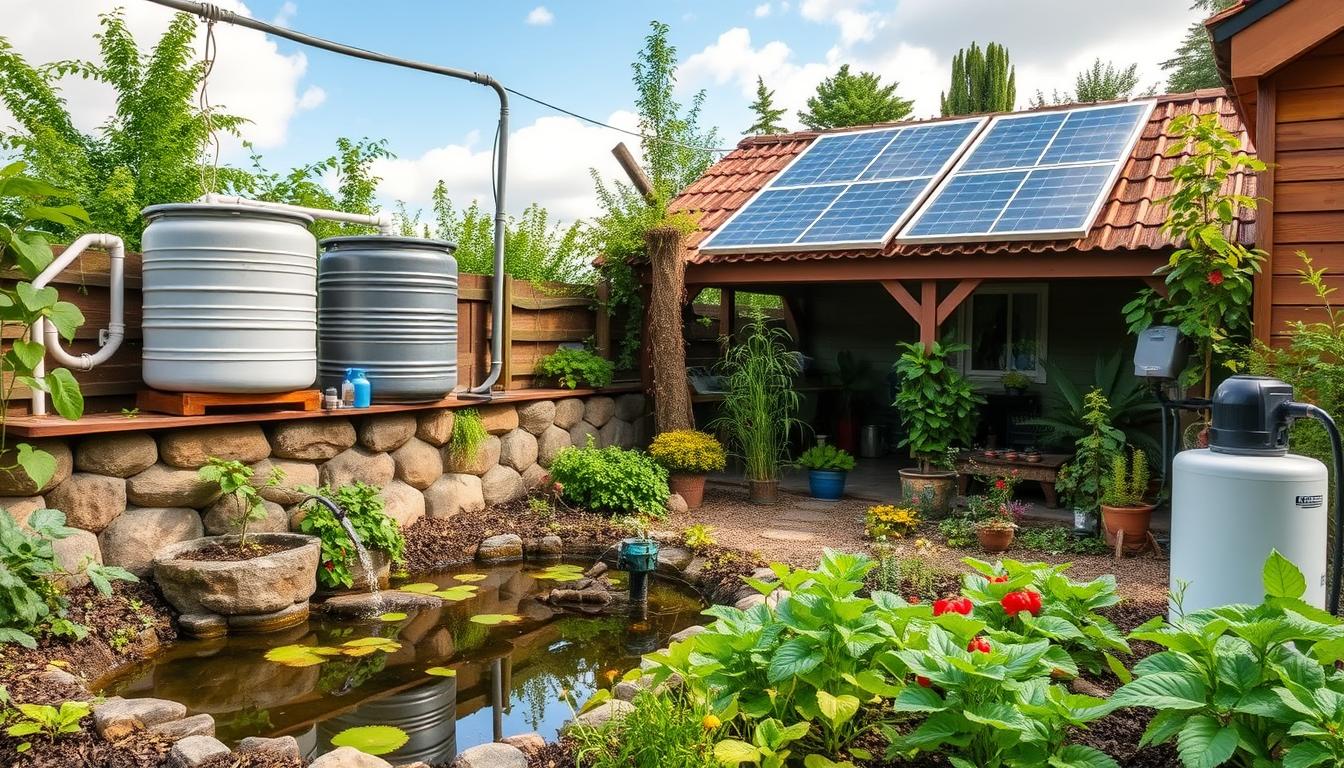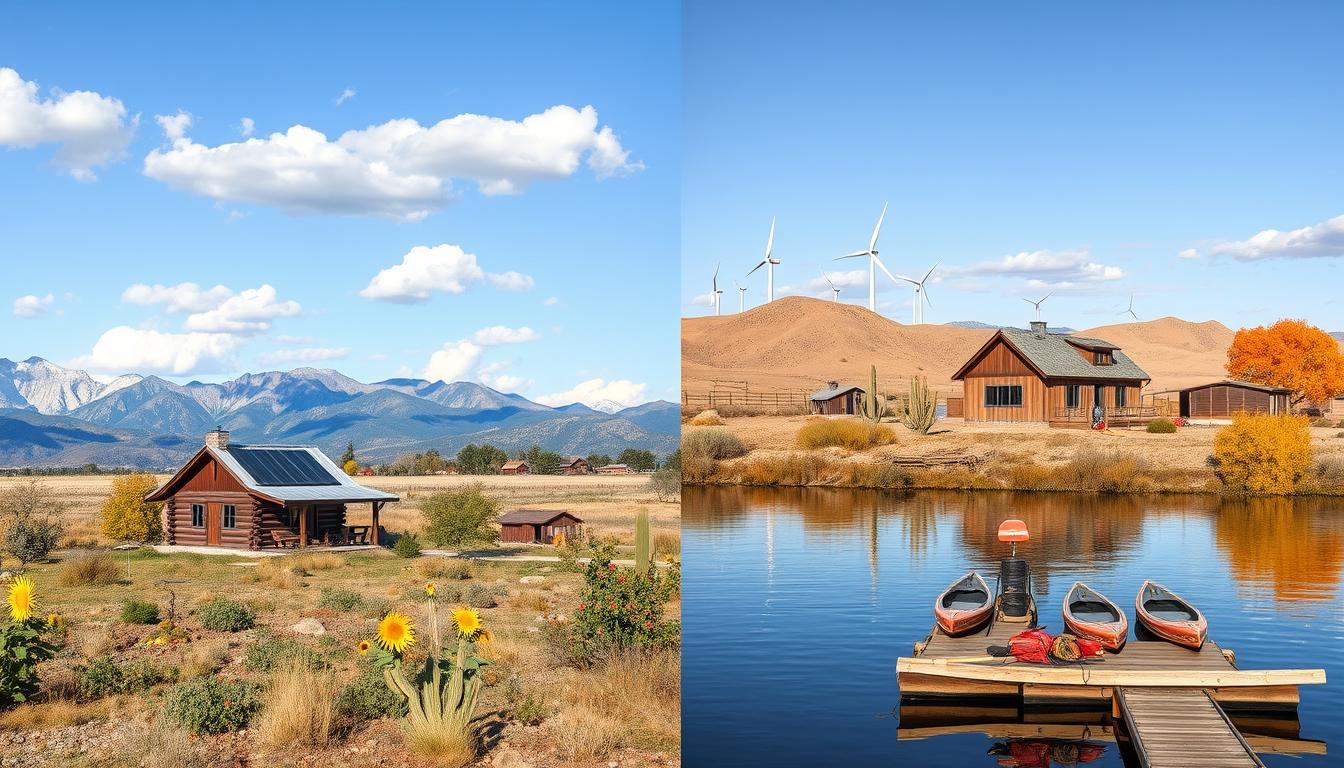In the pursuit of a self-sufficient and resilient homestead lifestyle, the management of water resources is a critical component. This comprehensive guide delves into the essential strategies and techniques for effectively collecting, conserving, and utilizing water to support a thriving, off-the-grid existence. Discover efficient systems for rainwater harvesting, greywater recycling, and irrigation methods that can transform your homestead into a model of sustainable water management.
Whether you’re an experienced homesteader or just starting your journey, this article will equip you with the knowledge and tools necessary to cultivate a harmonious relationship with the most precious resource on your land – water. From understanding the importance of water conservation to implementing practical solutions for storage and purification, this guide will empower you to navigate the challenges of homestead water management with confidence and resilience.
Key Takeaways
- Explore efficient systems for collecting and utilizing water on your homestead
- Understand the importance of water conservation and its environmental benefits
- Discover rainwater harvesting techniques and greywater recycling methods
- Learn about effective irrigation strategies, such as drip irrigation and mulching
- Develop a comprehensive water management plan for your homestead
- Enhance your survival skills and emergency preparedness in water-related scenarios
- Discover practical water storage solutions, including cisterns and ponds
Introduction to Water Management on the Homestead
Maintaining a reliable water supply is a crucial aspect of successful homestead life. As a homesteader, understanding the principles of water management is essential for creating a self-sufficient and sustainable living environment. This section provides an overview of the importance of water conservation and the various components involved in preserving a consistent water source on your homestead.
Effective water management is not just about ensuring a steady flow of water for your daily needs; it’s about adopting a holistic approach to conserving this precious resource. From rainwater harvesting to greywater recycling, homesteaders must explore a range of techniques to maximize water efficiency and minimize waste.
By understanding the fundamentals of water management, you can develop a comprehensive plan that addresses your homestead’s unique water requirements, while also considering the environmental impact of your water usage. This knowledge can help you create a thriving, self-reliant homestead that is in harmony with the surrounding ecosystem.
“Water is the driving force of all nature.” – Leonardo da Vinci
In the following sections, we will delve deeper into the various aspects of water management on the homestead, exploring strategies for conservation, harvesting, and efficient utilization of this precious resource.
The Importance of Water Conservation
As homesteaders, we understand the vital role water plays in sustaining our way of life. Water conservation is not just a priority – it’s a necessity. By reducing water waste and embracing environmentally-friendly practices, we can not only protect our precious water resources but also contribute to the overall sustainability of our homesteads.
Reducing Water Waste
One of the most impactful ways to conserve water is by minimizing waste. This can be achieved through simple yet effective strategies, such as:
- Regularly checking for and repairing any leaks in plumbing, fixtures, and appliances
- Investing in water-efficient appliances and fixtures, such as low-flow showerheads and toilets
- Implementing water-wise landscaping practices, like drought-tolerant plants and drip irrigation systems
- Educating family members on water-saving habits, such as turning off the tap while brushing teeth or taking shorter showers
Environmental Benefits
By prioritizing water conservation, homesteaders can contribute to the overall health and well-being of the local environment. Reduced water usage means less strain on natural water sources, allowing them to replenish and maintain a balanced ecosystem. Additionally, water-wise practices can help mitigate the impact of drought and climate change, ensuring a more resilient and sustainable future for our communities.
“Water is the driving force of all nature.”
– Leonardo da Vinci
As we continue to navigate the complexities of homestead living, water conservation remains a critical component of our stewardship. By embracing these strategies and recognizing the environmental benefits, we can ensure that our water resources are protected and our homestead thrives for generations to come.
Rainwater Harvesting Systems
Rainwater harvesting is a smart and eco-friendly way to supplement your water supply on the homestead. This practice involves capturing and storing rainwater for various uses, reducing reliance on municipal or well water sources. One of the most common rainwater harvesting systems is the barrel and tank setup.
Barrel and Tank Setups
Rainwater barrels and tanks are a simple and affordable way to start your rainwater harvesting journey. These vessels collect runoff from your roof, gutters, and downspouts, providing a reliable source of water for activities like gardening, cleaning, and even supplementing your household water needs.
When setting up a rainwater harvesting system, consider the following:
- Size of the collection area (roof size)
- Annual rainfall in your region
- Desired storage capacity (barrels or tanks)
- Proper filtration and purification methods
Investing in a rainwater harvesting system not only helps you conserve water but also reduces the strain on municipal water supplies and lowers your utility bills. With a few basic components and some strategic planning, you can start capturing and utilizing this precious resource on your homestead.

“Rainwater harvesting is a simple and effective way to become more self-sufficient and eco-conscious on your homestead.”
Greywater Recycling
One of the most effective water management strategies for homesteaders is greywater recycling. Greywater refers to the wastewater generated from sinks, showers, washing machines, and other non-toilet sources. By properly collecting, treating, and reusing this greywater, homesteaders can significantly reduce their reliance on their primary water supply, conserving this precious resource.
Greywater recycling involves diverting this wastewater away from the septic system or municipal sewers and repurposing it for irrigation, landscaping, and other non-potable applications. This not only reduces the demand on your main water source but also minimizes the strain on wastewater treatment systems.
To implement a greywater recycling system, homesteaders can install dedicated plumbing, storage tanks, and filtration equipment. This allows the greywater to be safely reused for tasks like watering gardens, washing vehicles, and even flushing toilets. By reusing water, homesteaders can conserve this valuable resource and reduce their overall water consumption.
Properly managing and maintaining a greywater recycling system is crucial to ensure the water is safely reused without compromising hygiene or the environment. Homesteaders should research local regulations, consult with professionals, and follow best practices to ensure their greywater recycling system is efficient and compliant.
“Greywater recycling is a game-changer for water-conscious homesteaders, allowing them to reduce their reliance on freshwater sources and minimize waste.”
By incorporating greywater recycling into their water management strategies, homesteaders can make a significant impact on their water usage and promote sustainability on their property.
Efficient Irrigation Techniques
Maintaining a productive homestead requires a strategic approach to water management. Two key irrigation techniques that can help optimize water usage on your property are drip irrigation and mulching. By implementing these water-wise methods, you can support the overall health of your garden and landscape while conserving this precious resource.
Drip Irrigation
Drip irrigation is a highly efficient irrigation technique that delivers water directly to the root zone of your plants. This targeted approach reduces water waste and minimizes evaporation, making it an ideal choice for homesteaders looking to maximize their water efficiency. Drip systems can be customized to meet the unique needs of your garden, ensuring each plant receives the right amount of moisture.
Mulching
In addition to drip irrigation, mulching is another valuable irrigation technique for the homestead. By applying a layer of organic material, such as wood chips or straw, around your plants, you can help conserve soil moisture and reduce evaporation. This not only saves water but also suppresses weed growth and insulates the soil, creating a more favorable environment for your plants to thrive.
“Implementing efficient irrigation techniques like drip irrigation and mulching is a game-changer for homesteaders looking to optimize their water usage and support the long-term health of their gardens.”
By incorporating these water-wise strategies into your homestead, you can ensure your plants receive the hydration they need while minimizing waste and promoting environmental sustainability. Explore the benefits of drip irrigation and mulching to elevate your homestead’s water management practices.
Water Management on the Homestead
Maintaining a sustainable water supply is a crucial aspect of homestead living. Effective water management encompasses various strategies, from rainwater harvesting to efficient irrigation techniques, all aimed at conserving this precious resource. By understanding the intricacies of water management on the homestead, homesteaders can ensure a reliable and self-sufficient water system that supports their homestead life and reduces their environmental impact.
Rainwater harvesting is a popular method for capturing and storing precipitation for later use. This approach involves setting up barrel or tank systems to collect and store rainwater, which can then be utilized for irrigation, livestock watering, and even household purposes. Greywater recycling, or the reuse of water from sinks, showers, and washing machines, is another effective strategy that reduces the demand on freshwater sources.

Efficient irrigation techniques, such as drip irrigation and mulching, can significantly improve water usage on the homestead. Drip irrigation systems deliver water directly to the roots of plants, minimizing evaporation and ensuring that water is used effectively. Mulching, the practice of covering soil with organic materials, helps retain moisture and reduce the need for frequent watering.
“Water management is the foundation of a thriving homestead. By adopting a comprehensive approach, homesteaders can ensure a reliable and sustainable water supply for their land and their families.”
Water storage solutions, such as cisterns and ponds, play a crucial role in water management on the homestead. These systems allow homesteaders to capture and store water during times of abundance, ensuring a reliable supply during periods of drought or high demand.
Developing a well-rounded water management plan is essential for homesteaders seeking to live a self-sufficient and eco-friendly lifestyle. By combining rainwater harvesting, greywater recycling, efficient irrigation, and water storage solutions, homesteaders can create a resilient and sustainable water system that supports their homestead life and minimizes their environmental impact.
Water Storage Solutions
Maintaining a consistent water supply is a critical aspect of homestead management. Among the versatile water storage options available, cisterns and ponds stand out as reliable and efficient solutions. These systems can help ensure that your homestead has access to water, even during periods of drought or high demand.
Cisterns: A Resilient Water Storage System
Cisterns are aboveground or underground tanks designed to collect and store rainwater. These sturdy structures can be crafted from a variety of materials, such as concrete, metal, or even repurposed containers. Properly sized and maintained cisterns can provide a steady supply of water for household use, irrigation, and livestock. By capturing and storing precipitation, cisterns reduce the strain on municipal or well-based water sources, making them a valuable asset for self-sufficient living.
Ponds: A Natural Water Reservoir
In addition to cisterns, ponds can serve as a versatile water storage solution on the homestead. These natural or man-made bodies of water can be designed to collect and retain rainwater, surface runoff, and even groundwater. Ponds not only provide a reliable water source but also offer opportunities for aquaculture, wildlife habitat, and recreational activities. Careful planning and maintenance are essential to ensure the pond’s water quality and longevity.
Whether you choose cisterns, ponds, or a combination of both, incorporating reliable water storage solutions is a crucial step in creating a self-sustaining and resilient homestead. By investing in these systems, you can ensure a consistent water supply, reduce your reliance on external sources, and enhance the overall sustainability of your homestead.
Water Purification Methods
Ensuring the purity and safety of your water supply is crucial for the health and well-being of your homestead. When it comes to water purification, filtration systems play a vital role in removing contaminants and providing clean, potable water.
Filtration Systems
There are various types of water filters available, each with its own set of benefits and capabilities. Understanding the different filtration options can help you select the most suitable system for your homestead’s water needs.
- Sediment Filters: These filters remove larger particles, such as dirt, sand, and rust, from the water, improving its clarity and taste.
- Carbon Filters: Activated carbon filters are highly effective at removing chlorine, pesticides, and other organic compounds, as well as improving the overall taste and odor of the water.
- Reverse Osmosis (RO) Filters: RO systems use a semi-permeable membrane to remove a wide range of contaminants, including heavy metals, dissolved salts, and microorganisms, producing clean, high-quality water.
- UV Disinfection: Ultraviolet light-based systems use UV radiation to kill bacteria, viruses, and other microorganisms, effectively disinfecting the water without the need for chemicals.
Implementing a comprehensive water purification strategy, which may involve a combination of these filtration systems, can ensure a reliable supply of clean water for your homestead, safeguarding the health and well-being of your family and livestock.
“Investing in a reliable water purification system is one of the most important steps you can take to protect the health and sustainability of your homestead.”
Homestead Water Management Plan
Developing a comprehensive water management plan is crucial for maintaining a thriving, self-sufficient homestead life. This section guides you through the process of creating a tailored water management plan that addresses your specific needs and challenges. Learn how to assess your water requirements, integrate various water conservation and collection strategies, and implement a holistic approach to ensure a reliable and sustainable water supply for your homestead.
Crafting an effective water management plan involves several key steps:
- Assess your water usage: Analyze your daily, monthly, and seasonal water needs, taking into account factors such as gardening, livestock, and household consumption.
- Evaluate your water sources: Identify the available water sources on your property, including rainfall, groundwater, and any existing wells or cisterns.
- Implement water conservation strategies: Explore ways to reduce water waste, such as installing efficient fixtures, practicing drought-tolerant gardening, and implementing greywater recycling systems.
- Develop a water collection and storage plan: Design a rainwater harvesting system, construct on-site storage solutions like cisterns or ponds, and ensure proper water treatment and purification.
- Monitor and adjust: Regularly review and update your water management plan to adapt to changing conditions, such as seasonal variations or changes in your homestead’s water needs.
By developing a comprehensive water management plan, you can ensure a reliable and sustainable water supply for your homestead life, supporting your self-sufficiency and resilience in the face of unpredictable environmental challenges.
“A well-designed water management plan is the foundation of a thriving, self-reliant homestead.”
Survival Skills and Emergency Preparedness
In the face of unforeseen events or natural disasters, having the right survival skills and emergency preparedness measures in place can make all the difference on a homestead. This section delves into enhancing your water management capabilities, ensuring your homestead is equipped to weather challenging situations.
Maintaining water security and self-sufficiency during times of crisis is crucial. Discover essential strategies for water storage, purification, and alternative sources, empowering you to stay resilient when the unexpected strikes.
Water Storage Solutions
Proper water storage is a vital aspect of emergency preparedness. Consider investing in cisterns and ponds to expand your water storage capacity. These systems can provide a reliable backup supply, safeguarding your homestead’s access to this precious resource.
Water Purification Methods
In an emergency, having the ability to purify water is essential. Explore filtration systems that can remove contaminants and ensure the safety of your water supply. Familiarize yourself with these techniques to be ready for any scenario.
Alternative Water Sources
- Identify potential rainwater harvesting opportunities on your homestead.
- Consider implementing greywater recycling systems to reuse water from sinks, showers, and washing machines.
- Investigate efficient irrigation techniques, such as drip irrigation and mulching, to maximize the utilization of your water resources.
By implementing these survival skills and emergency preparedness measures, you can enhance your homestead’s water management capabilities and ensure your family’s resilience in the face of challenging times.
“Being prepared for emergencies is not just a matter of survival, but a way to ensure the long-term sustainability of your homestead.”
Conclusion
In the captivating world of homestead life, effective water management emerges as a cornerstone of success. By embracing the strategies and techniques explored throughout this guide, homesteaders can cultivate a thriving, self-sufficient environment that is resilient and adaptable to evolving water conditions.
The principles of water conservation, collection, and efficient utilization are the cornerstones of a sustainable homestead. Implementing rainwater harvesting systems, greywater recycling, and innovative irrigation techniques allows homesteaders to minimize water waste and foster a more environmentally responsible lifestyle. This not only benefits the land but also strengthens the homestead’s economic resilience, ensuring a reliable and self-reliant water supply.
Remember, a comprehensive water management plan is essential for the long-term viability of your homestead life. Embrace these strategies and unlock the full potential of your homestead, where water is harnessed as a precious resource to cultivate a thriving, self-sufficient oasis. Embark on this water management journey and witness the transformative power of sustainable practices that will shape the future of your homestead.







